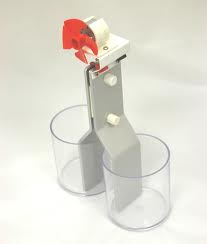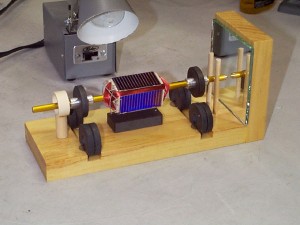Gentiana Spahiu
Last Monday in our science class we were visited by Mr. Vale, the lab coordinator who brought along a box, which I called the “magician’s hat.” One after the other very enthusiastically he brought out a few eco-friendly miniature engines and other interesting objects. He introduced us to the following:
The Stirling Engine: a substitute to the steam engine. The way this device works is based on the temperature differentiation of air and fluid
which results into a net conversion of heat energy to mechanical work (explains the wheel movement). The Stirling Engine was introduced in 1816 and it was considered high efficient operating at 40% compared to the other hot air engines.
The Peltier Engine: 19th century device. This engine is build with two dissimilar metals one of them heated and the other cooled where energy is created as heat travels from one end to the other. Such device is usually used in coolers.
Mendocino Motors were another interesting mechanism. This is a magnetically levitating solar powered motor generally used to demonstrate how solar energy can be converted to electrical or mechanical energy. The magnets on the base create floating movements in the central shaft where solar panels are placed. This movement is transferred into mechanical energy that rotate the motors in the devices. 
Bug Zapper: an household gadget to kill insects. It operates with batteries and it kills the bugs through an electric shot. 
BIC lighters are build on a small piece of quartz. This metal once it is struck it emits an electrical impulse (piezoelectric effect) which lights the fuel. They are mostly used in lighters.


Another great blog.